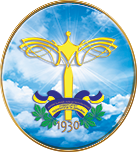Будь ласка, використовуйте цей ідентифікатор, щоб цитувати або посилатися на цей матеріал:
https://er.knutd.edu.ua/handle/123456789/28780| Назва: | Реєстр Війська Запорозького Низового 1756 р. як джерело дослідження українського чоловічого іменника XVIII ст. |
| Інші назви: | The 1756 Register of the Zaporozhian Host as a source of research of the Ukrainian men`s names of the XVIII century |
| Автори: | Дзира, Іван Ярославович |
| Ключові слова: | особове чоловіче ім’я церковно-календарне ім’я народно-розмовна форма реєстр суфікс personal man’s name church-calendar name colloquial form suffix register |
| Дата публікації: | 2024 |
| Бібліографічний опис: | Дзира І. Я. Реєстр Війська Запорозького Низового 1756 р. як джерело дослідження українського чоловічого іменника XVIII ст. / І. Я. Дзира // Мовознавчий вісник : збірник наукових праць. – Черкаси, 2024. – Вип. 36. – С. 8–14. |
| Source: | Мовознавчий вісник: збірник наукових праць |
| Короткий огляд (реферат): | У статті вперше здійснено спробу дослідити особові чоловічі імена Реєстру Війська Запорозького Низового 1756 р. Виявлений унаслідок статистичного аналізу іменник налічує понад 130 особових імен, носіями яких є 14452 запорожці. За винятком 2-х, усі імена є церковно-християнськими за своїм походженням. 16 з них вживаються тільки в повній календарній формі, 33 – паралельно в календарній і народно-розмовній, а більше 80-ти зафіксовані лише в народно-розмовних формах.
До найпопулярніших імен, частота використання яких разом з фонетичними варіантами й похідними формами перевищує 2 %, належать: Иванъ, Ѳεдоръ, Василь, Грицко, Яцко, Стεпанъ, Пεтро, Андрѣй, Сεмεнъ, Павло та Михайло. Порівняння отриманого переліку з результатами аналізу антропонімного матеріалу ХVІІ ст. свідчить про стабільність масиву найпоширеніших українських чоловічих імен.
Найпоширенішими фонетичними змінами традиційних календарних форм були: перехід ініціального голосного а- в о-; перехід початкового сполучення йе- в о-; втрата ненаголошеного початкового и-; стягнення не властивих українській мові дифтонгів; заміна звука ф на п, х, в та сполучення хв; спрощення в групах приголосних тощо.
За винятком 2-х, усі зафіксовані в реєстрі імена утворені морфологічним способом, вираженим усіченням, а також суфіксацією усічених або повних основ. Список формантів, виявлених в іменнику пам’ятки, складається з 13 мономорфемних, 7 поліморфемних суфіксів і однієї морфеми-флексії. Усі вони, за винятком суфіксів -к-о, -ц-к-о й морфеми-флексії -о, були малопродуктивними. Така відносно невелика кількість формантів, як і незначна їх продуктивність, пояснюються іманентними процесами еволюції словотворчої системи ділової української мови. Abstract. Introduction. Since the Zaporozhian Cossacks accumulated in itself the most courageous, freedom-loving and enterprising representatives of all classes and strata of the society of that time, who came from different regions of Ukraine, then in 1756 Register of the Zaporozhian Host was reflected not a regional, but a national arrive of man’s names, which circulated in the entire ethnic Ukrainian territory. The purpose of the article is to characterize the personal names included in the official source of the middle of the XVIII cen. The author set the task to establishing the richness of the name man, finding out the degree of phonetic adaptation of church-Christian names, and considering the changes that their morphological structure has undergone on the Ukrainian linguistic soil. Results. The list of the name man revealed as a result of the statistical analysis includes more than 130 personal names, which are borne by 14452 Zaporozhians. With the exception 2, all names are church-Christian in origin. 16 of them are used only in the full calendar form, 33 are used simultaneously in the calendar and colloquial forms, and more than 80 are recorded only in the colloquial forms. The most popular names, the frequency of use of which together with phonetic variants and derived forms exceeds 2 %, include Иванъ, Ѳεдоръ, Василь, Грицко, Яцко, Стεпанъ, Пεтро, Андрѣй, Сεмεнъ, Павло аnd Михайло. The most common phonetic changes of traditional calendar forms were: the transition of the initial vowel a- to o-; the transition of the initial conjugation je- to o-; loss unstressed initial и-; constriction of diphthongs not peculiar to Ukrainian language; replacing the sound ф with п, х, в and the sound combination хв; simplification in groups consonants, ets. With the exception of 2, all the names recorded in the register are formed morphologically, expressed by truncation, as well as suffixation of truncated or full bases. The list of formants found in the names of the monument consists of 13 monomorphemic, 7 polymorphemic suffixes and one morpheme-inflection. Originality. The Personal man’s names in 1756 Register of the Zaporozhian Host were examined for the first time. Conclusions. The name repertoire of the monument confirms the final disappearance during this time from official communication of non-canonical names and their complete replacement by canonical ones. Despite the clear tendency towards the predominance of adapted folk forms, some competition between them and their calendar Church Slavonic prototypes can be traced in the register. |
| DOI: | 10.31651/2226-4388-2024-36-8-14 |
| URI (Уніфікований ідентифікатор ресурсу): | https://er.knutd.edu.ua/handle/123456789/28780 |
| Faculty: | Інститут права та сучасних технологій |
| Department: | Кафедра філології та перекладу (ФП) |
| ISSN: | 978-966-493-821-8 |
| Розташовується у зібраннях: | Наукові публікації (статті) |
Файли цього матеріалу:
| Файл | Опис | Розмір | Формат | |
|---|---|---|---|---|
| Реєстр війська низового.pdf | 422,58 kB | Adobe PDF | Переглянути/Відкрити |
Усі матеріали в архіві електронних ресурсів захищені авторським правом, всі права збережені.
